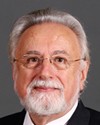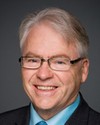Thank you, Mr. Banks, and thank you, Mr. Bains.
To the Bloc Québécois, Madam Brunelle and Monsieur Ouellet, you're splitting the time.
Go ahead, please, for up to seven minutes.
Evidence of meeting #5 for Natural Resources in the 40th Parliament, 3rd Session. (The original version is on Parliament’s site, as are the minutes.) The winning word was isotopes.
A recording is available from Parliament.
10:35 a.m.
Conservative

The Chair Conservative Leon Benoit
Thank you, Mr. Banks, and thank you, Mr. Bains.
To the Bloc Québécois, Madam Brunelle and Monsieur Ouellet, you're splitting the time.
Go ahead, please, for up to seven minutes.
10:35 a.m.
Bloc

Paule Brunelle Bloc Trois-Rivières, QC
Thank you, Mr. Chairman.
Mr. Banks, you have a series of recommendations for government, including recommendation 2b. that reads as follows:b. detailed planning of a new multi-purpose reactor for research and isotope production that can take over and expand the functions of the aging NRU reactor over the long term.
Do you plan on using what was developed under the MAPLE projects? As you know AECL abandoned these reactors in 2008. Yet, some witnesses have told us that MAPLE projects could work.
Is there a relationship between the MAPLE projects and the new reactor you are recommending?
10:35 a.m.
As an Individual
In our report, we did not address the MAPLE issue. I'm not a technical expert on the issues involved in the MAPLE reactors, but we do recognize certain key points about the MAPLEs. They were supposed to be a dedicated facility for medical isotope production only--and not even every medical isotope, but certain ones.
What we're concerned about is that broader picture. The MAPLE reactors would not really help us meet that broader picture because it would not allow us to do nuclear R and D in core in a research reactor. It would not produce some of the other isotopes such as cobalt-60, which is also used for cancer treatment. There are other isotopes for industrial purposes. There's also the advanced materials research with neutron beams that goes on with the multi-purpose reactor. All of these functions would not be met with the MAPLE reactors.
Regarding the possibility that there may only be 10 years left in the isotope market, there are of course different opinions on that. Just supposing it is the case, we strongly feel that the new multi-purpose reactor would justify its costs on the basis of the other missions. Canada would still get a strong return on its investment in that facility regardless of what happens with the isotope market. That's why we're focused on that.
It would be a new facility more like the NRU reactor at Chalk River, not like the MAPLE reactors. There's quite a significant difference in design. The NRU reactor is an extremely flexible machine. That's something that has to be built so that we can anticipate and respond to the needs of the future. When the NRU was built, we didn't even know the medical isotope market was going to be important, but because it was built flexibly and for multiple purposes, we were able to take advantage of that market and improve the health of Canadians.
10:35 a.m.
Bloc

Christian Ouellet Bloc Brome—Missisquoi, QC
Thank you, Mr. Chairman.
Mr. Meyer, did you mention that you could now use natural uranium? Do you think that you will save more lives than those that would be compromised through this production? In other words, uranium extraction and its waste are very dangerous. It follows that we may lose more lives to uranium extraction and due to the production of uranium waste than the number we would save—
10:40 a.m.
Conservative
10:40 a.m.
Bloc

Christian Ouellet Bloc Brome—Missisquoi, QC
Do you think that we will save more lives by making isotopes with natural uranium than we will lose, in any case, because of the extraction of uranium?
10:40 a.m.
Head, Strategic Planning and Communications, TRIUMF
Thank you for the question. It's quite apropos.
The quantities of uranium used to produce isotopes are quite small. We're talking about very small quantities. The natural uranium can be sourced from anywhere around the world; I pointed to Saskatchewan as one of Canada's repositories. The technology we're describing actually produces the same types of isotopes that are currently produced from isotope production reactors, so it's the same distribution of isotopes.
As to whether these isotopes in demand by the clinical and medical community save more lives than are risked in the mining of uranium, I confess I'm not an expert on weighing those costs and benefits. However, I can point to the continued basis for the demand for molybdenum-99 and its derivative, technetium. We've heard experts say that's very important to the clinicians, so those doctors are making those calculated judgments.
10:40 a.m.
Bloc

Christian Ouellet Bloc Brome—Missisquoi, QC
Thank you.
Mr. Banks, you said that nuclear energy is clean, which really surprised and shocked me, because nuclear energy is being seen less and less as clean energy. But let me come back to the MAPLE project issue. Was the MAPLE installation's construction not abandoned because Canada had lost all of its good technicians, researchers and engineers? Nuclear power had been abandoned in Canada, and the experts emigrated to the United States and Europe.
Is it not true that there are only inexperienced people at Chalk River? This would be the reason why MAPLE did not get off the ground, because the project could not be realized.
10:40 a.m.
As an Individual
My impression of the MAPLE reactor is as being largely a production facility as opposed to a research and development facility that facilitates the training of many scientists and engineers. There would have been many nuclear engineers working on the MAPLE reactors. I'm not really an expert on that point.
Your question is about the loss of expertise at Chalk River. There is a sense that Chalk River Laboratories is not what it was, say, 20 years ago. There were more diverse research programs going on at Chalk River about 20 years ago. Over time, the core mission of the facility has gradually narrowed onto pretty much exclusively CANDU technology; that has come at an unfortunate cost of general research, and that has led to a loss of certain expertise. There was a particle accelerator there at one point that was called TASCC--
10:40 a.m.
Bloc

Christian Ouellet Bloc Brome—Missisquoi, QC
Could you answer my question? In my opinion, nuclear energy is not clean energy. I do not understand how you could say that, when we know that people who mine uranium die from it, that waste is abandoned on site and that it has to be cleared away later on. Moreover, plutonium and other radiations can be produced from nuclear installations. It is not clean energy.
10:40 a.m.
As an Individual
I've heard the label “clean” used for nuclear energy, often in the context of greenhouse gas emissions. It's one of the lowest emitters of greenhouse gases of all of our possible energy sources. That is not to say there aren't any other issues with it, but as far as the nuclear waste goes, from what I understand we have the expertise and capability of handling those materials over the long term.
As far as I know, the nuclear industry's safety record, as far as losses of life and accidents go, is actually one of the lowest of all energy industries in Canada.
10:45 a.m.
Conservative

The Chair Conservative Leon Benoit
Thank you, Dr. Banks.
Merci, Monsieur Ouellet.
We'll go now to the New Democratic Party, and Mr. Hyer, for up to seven minutes.
10:45 a.m.
NDP

Bruce Hyer NDP Thunder Bay—Superior North, ON
Thank you very much.
I have two questions for Mr. Meyer, and one to Mr. Banks. If you could all be punchy, it would help a lot to get through the seven minutes.
Mr. Meyer, it's my understanding that there is a so-called PETNET network in the United States of 47 PET facilities across the U.S. that have greatly reduced their need for the older technologies that are reactor-based, that we've been talking about, and for the isotopes that come from them. Is that true?
And if it's true, what role would you see your TRIUMF network having in building a national cyclotron network here in Canada?
10:45 a.m.
Head, Strategic Planning and Communications, TRIUMF
Thank you.
Certainly there is a network of PET isotope generators and cyclotron centres in the U.S. That is a robust network and it does supply a lot of the clinical demand.
What we envision...and this is part of a national discussion. TRIUMF had 16 major medical centres attend a conference in October 2007, where we actually discussed this topic of how you could put up a national network to coordinate development of isotopes, to share the clinical expertise, and to provide a coordinated clinical trials platform for new products.
The role that TRIUMF has is really as a research and development leader. We actually have expertise in all of the areas. Our view is that over the next 10 years it's fairly likely that Canada will move to a network of PET isotope producers. In fact, we're developing something we call the “espresso-maker”. It would be isotope on demand, single-patient doses that would be placed in every hospital for under a million dollars. That's certainly the direction we see the country headed. It's not going to be here tomorrow and it's not going to be here the day after that.
10:45 a.m.
NDP

Bruce Hyer NDP Thunder Bay—Superior North, ON
That's a great segue into my second question.
We MPs have a variety of functions. We have to look out for the planet, we have to look out for Canada, but we also have to look out for our constituencies, our ridings, our cities. In Thunder Bay we have a cancer centre, we have a regional health sciences centre, and we have a teaching university there. We're a really logical place for a new cyclotron. We have acquired a new PET scanner for the cancer centre there. But we need a cyclotron.
Minister Clement has apparently claimed to have put some new money into TRIUMF. It's my understanding that a lot of this was old money that's recommitted. It's a little vague as to where that money is actually going to go.
Thunder Bay has applied for it, but it hasn't heard about the feedback on an $8-million request for a cyclotron for Thunder Bay, which is one of those remote areas that needs those short-life, half-life materials for a very large region.
Do you know exactly where that $220 million for TRIUMF is going? What's your sense of where that $220 million is allocated? Is it all allocated? And will it provide for some of these new cyclotrons in remote areas like Thunder Bay?
10:45 a.m.
Head, Strategic Planning and Communications, TRIUMF
Thank you. That's an excellent question. There are actually a couple of topics there.
First of all, TRIUMF has licensed its cyclotron technology to a company in Richmond, British Columbia, known as Advanced Cyclotron Systems Inc. I'm not an expert on their business negotiations, but I believe they're in the process of selling a TRIUMF-designed cyclotron to Thunder Bay. We've had representatives of TRIUMF in Thunder Bay to discuss cyclotron technologies and how to grow that. Actually, I believe that's an excellent example of how the distributed model of producing isotopes can make a difference.
We're in similar discussions in Prince George with UNBC about how to deploy a cyclotron there.
With regard to your question concerning the $222 million, we certainly do know how it's allocated. It covers a variety of research and development programs focusing on particle physics, some nuclear science, this new accelerator technology, and a mainstream nuclear medicine program.
TRIUMF is a publicly funded enterprise, so we're not in a position to contract and sell equipment to Thunder Bay; however, we are the technical backstop for the existing Canadian providers of that. So we look forward to having Thunder Bay join the nuclear medicine network as one of the leaders of both practice and research.
10:50 a.m.
NDP

Bruce Hyer NDP Thunder Bay—Superior North, ON
Thank you very much.
Mr. Banks, I'm beginning to understand why the current government has been interested in privatizing AECL and is concerned about the significant costs associated with it. On page 4 of your report, you talk about recovering full costs at the end of about a decade. In large degree it sounds like yesterday's technologies, but maybe I didn't understand what I heard today.
Will your full-cost accounting over the longer term include the investment subsidies over that decade? Will it include the capital costs? Will it include the interest on those capital costs? Will it include the costs of waste storage? Do you yet have a business plan that this committee or other interested parties could look at to analyze your numbers?
I'm looking forward to a short response now, but a bigger response would be appreciated.
10:50 a.m.
As an Individual
I apologize for that paragraph being confusing, but the reference to 10 years was to mean that it may take a decade or so to actually set up and implement the vision that we're talking about.
When you're talking about recovering full costs for things like isotope production, you recognize that you have waste management issues and costs of processing the isotopes on site. All those costs are unique to the isotope production mission, so all of them have to be recovered; otherwise, you're subsidizing that mission.
The NRCan expert review panel specified that you'd recover about 10% to 15% of your reactor costs from isotope production. That's where the multi-purpose nature of the facility is an advantage, because when you're looking at capital operating costs, you divide them among the various missions. You're not recovering all those costs necessarily from that mission; most of those costs are in support of, or would be recovered through, the other missions.
However, all the costs that are unique to isotope production have to be covered. We're not in a position to present the business plan, per se, of how all that would work, but we do know that the costs of production are only about a tenth of the end user market price, so there's significant room to grow without greatly affecting the end users if the business model around that changes.
We mention informally that in order to recover those costs, there would be an increase in the price by a factor of about three at the production standpoint. Essentially what we're saying is that whatever those costs are, let's charge it. We're not in a position to do the calculations and determine that it's going to cost a certain amount and then what the price would be; whatever the price is, let's charge it. That's operating on a sound business model.
10:50 a.m.
Conservative

The Chair Conservative Leon Benoit
Thank you, Mr. Hyer.
We go finally to the government side and Mr. Anderson, for up to seven minutes.